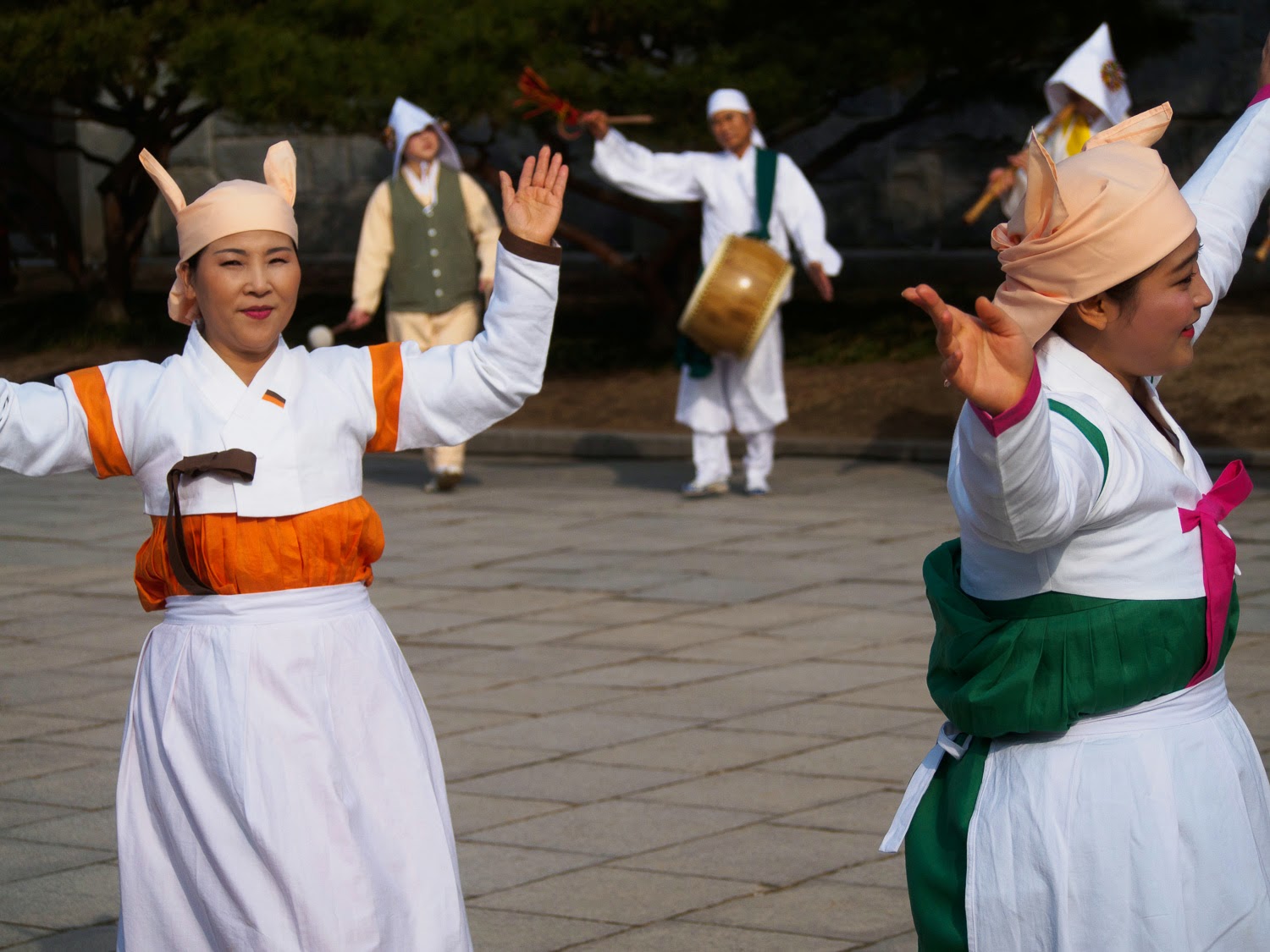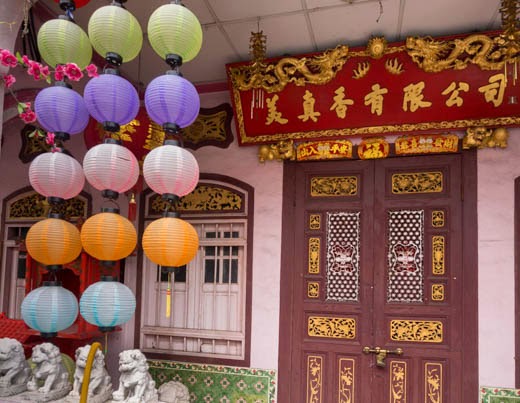One of my favorite Chinese temples in Georgetown, Penang, was the Hock Teik Cheng Sin Temple.
From the narrow entrance, I was rather surprised at how much more spacious the interior felt. I was equally impressed with the incredible renovation that was completed in 2006 after two years of intense work by over 20 artisans.
What a beautiful collection of a varied art forms - chien nien porcelain mosaic work, embroidery, sign carving, and lanterns- all just in this photo.
I enjoyed seeing the curtain of lanterns, as seen from the courtyard (note the once again rainy scene).
Ceiling beams. This temple was built without any nails.
 |
| Corner of entrance |
Details of the intricate door paintings
From the sign on the front of the temple:
Officially registered with the Chinese Protectorate of Penang on 11.10.1892, the Hock Teik Cheng Sin Temple has had a checkered history colored by the segmentary traits of Southern Fujians. It is essentially a community temple devoted to the workshop of Twa Peh Kong (Da Bagong).
Historically the origin of the Hock Teik Cheng Sin Temple can be traced back to early 19th century while the Khoo Teeau Pang was the founding head of the Kean Teik Tong which was formed in year 1844. The land of 14,865 square feet of Lot 10 (now known as Lot 466), section 21 was was granted to Khoo Teeau Pang in (the) year 1850. The temple building and nine shophouses could have been built between the year 1850 and 1867. In (the) year 1867, the Penang Riots took place between the two feuding parties, which were Kean Teik Tong and Ghee Hin Secret Society.
The organizational structure of the Hock Teik Cheng Sin Temple is unique. Hock Teik Chen Sin Temple does not function as a "mother institution" but the Board of Trustees holds the temple for the use of the four brotherhood societies...the temple is at present the physical apex religious society of all the allied bodies."
 |
| Sin Long Siang Tay figure and candle |
It is also known as the Hokkien Tua Pek Kong Temple, after its patron deity, the Taoist god of prosperity. The temple was once the headquarters for a secret society, which would perform rites in front of the deity.
The temple is the only one in Malaysia that has a Kuan Kong figure on its roof, a deity synonymous symbol for the secret societies of royalty.
Read more about the Hock Teik Cheng Sin Temple















































